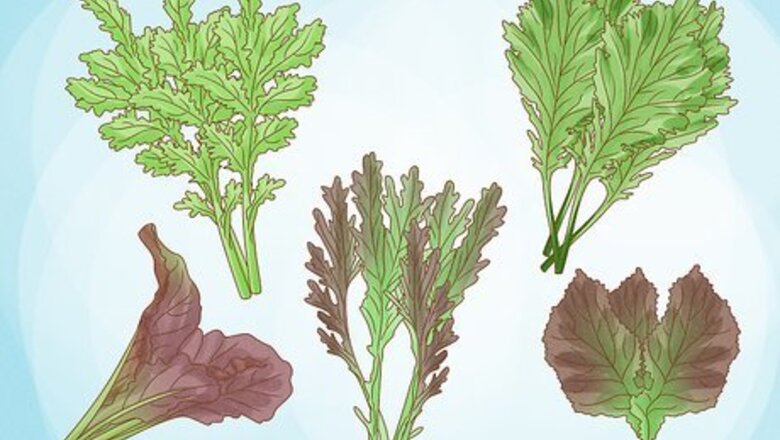
views
- Plant mustard seeds in moist, rich soil 3–6 in (7.6–15.2 cm) deep about 4 weeks before the last frost.
- Water your mustard seeds any time the soil looks dry. Aim to keep the soil consistently moist.
- Cut your mature greens after 4-6 weeks, trimming them at the base of the stem. Store them in your fridge for up to a week.
Planting Mustard Greens
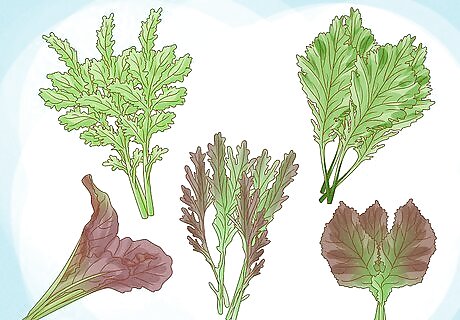
Choose from a variety of mustard greens. Mustard greens come in different varieties ranging in color, texture, and shape of leaves. These varying types of mustard greens come from different regions of the world, including Asia, Africa, and the Southeastern US. To create an interesting mix, plant two or more of these varieties: Ruby Streaks Red Giant Scarlet frills Southern Giant Curled Golden Frills Amara Garnet Giant Red Splendor Suehlihung No. 2
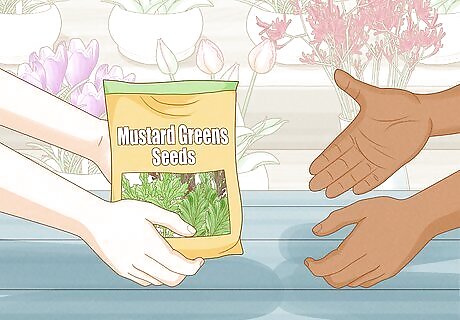
Purchase your seeds. Purchase seeds for growing mustard greens from a local gardening center, online, at hardware stores, or at department stores. Given the quick growth cycle of mustard greens, you can replant them every two or three weeks to keep up production. If you intend to do so, purchase more accordingly.
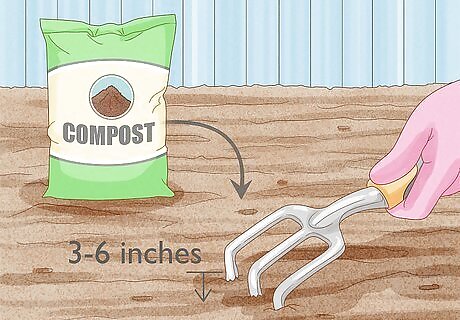
Prepare the soil. Mustard greens grow best in moist, rich soil. To prepare the soil for planting, spread compost over the planting area, about 3 to 6 inches thick. Carefully turn the compost into the ground with a digging fork, loosening the soil.
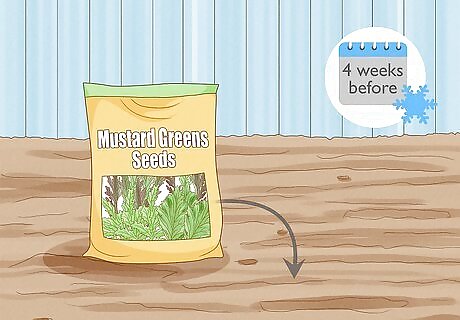
Time your planting. Mustard greens thrive in cooler temperatures but do not grow well in summer. Aim to start seeds about four weeks before the last frost. The plants can tolerate frost, which actually contributes to a sweeter flavor to the greens.

Plant the seeds. Plant seeds just under the soil, about a half an inch apart. Once the seedlings sprout and grow their first leaves, gently unearth them and pull them apart into clumps. Replant the seedlings approximately 12 inches apart. While this replanting of the seedlings is not necessary, doing so will allow greens to grow faster and yield more.
Caring for Your Mustard Greens
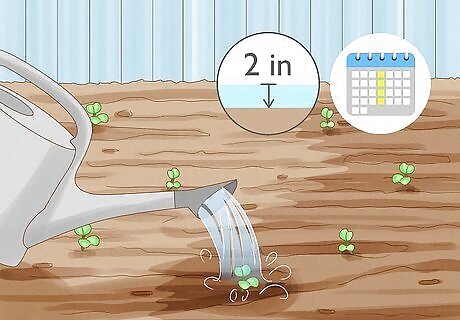
Water the greens. Mustard greens require 2 inches of water per week to thrive. Factoring in rainfall, make sure that they receive adequate hydration. Be sure to keep the soil evenly and consistently watered.

Remove weeds. Carefully remove any weeds you see growing around your plants. While mustard greens do not require a lot of room to grow, the influx of weeds can cause unnecessary disturbance, particularly to fragile seedlings. To remove weeds, softly dig them out with your hands, ensuring that the roots are removed as well.
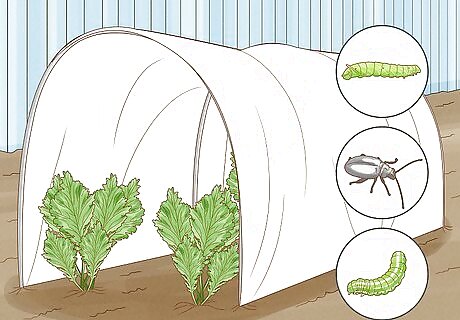
Protect from insects and disease. To ensure the successful growth of your mustard greens, protect them from bugs that might feed on them (e.g. cabbage worms, cabbage loopers, and flea beetles). Cover plants with row cover fabric, available for purchase at most gardening centers. Since the insects can't reach the plant under the fabric, they can't feed on it, or lay eggs to reproduce. Make sure that you keep track of the temperature and moisture levels in your covered rows. Enclosed growing areas can get too hot for greens, so it is important to monitor the plants closely. Avoid getting the leaves wet every time you water your mustard greens. This will help to reduce the risk of your mustard greens getting downy mildew.
Harvesting Mustard Greens

Collect your greens. Mustard greens should be harvested when the leaves are still young and tender; older leaves will have a bitterer flavor. You can start to pick the leaves after 4 weeks, when they should be about 3 to 6 inches long (7.6-15.2cm). You can harvest greens by snipping off outer leaves from the plant, and then leaving it to continue growing. Alternatively, you can unearth the entire plant and harvest all of the leaves at once. Discard any yellow leaves that you find on the plant.
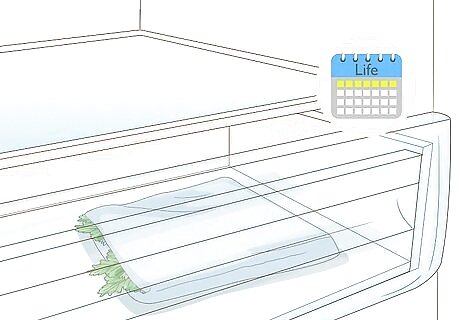
Store your greens. Pick all your mustard greens and refrigerate them. Leaves can be kept in the crisper drawer for up to a week. Beyond that, you can freeze the greens to be used for cooking later on.

Harvest mustard seeds. When the environment gets too hot, the plants will begin to seed and grow a flower stalk, signaling that no new leaves will grow. At this point you can either dig up the plants, or leave them there to seed. Once the seed pod developing on the plant has dried, you can collect the seeds. Be sure to collect them before the seed pod splits open; seeds that spill onto the soil will likely be dispersed and grow into new plants later on.




















Comments
0 comment